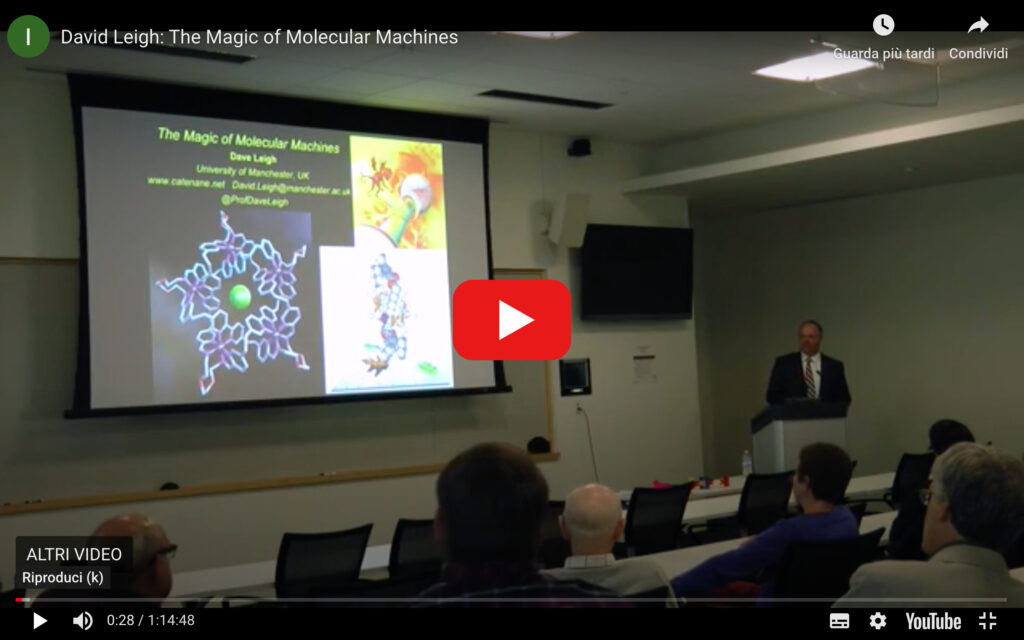4.1. Molecular machines for making molecules
One of the main tasks of natural molecular machines is the production of other molecules. The most important examples of this type of nanomachines are DNA polymerases, which deal with the replication of DNA molecules, and ribosomes, in which proteins are manufactured (Goodsell 2009)1Goodsell, D. S. (2009) The machinery of life, New York: Springer.. In 2013 David Leigh and his collaborators at the University of Manchester, in Great Britain, succeeded in building a molecular machine capable of synthesizing a chain of three amino acids (tripeptide), according to a predetermined sequence programmed in the machine itself (Lewandowski 2013)2Lewandowski, B., De Bo, G., Ward, J. W., Papmeyer, M., Kuschel, S., Aldegunde, M. J., Gramlich, P. M. E., Heckmann, D., Goldup, S. M., D’Souza, D. M., Fernandes, A. E., Leigh, D. A. (2013) Sequence-specific peptide synthesis by an artificial small-molecule machine, Science, 339: 189-193.. Although the system is very sophisticated and exploits a complex series of chemical reactions, it is possible, leaving out the details, to explain its operation in a rather simple manner as shown in Fig. 27.

Rotaxane 8 (Fig. 27a) is composed of a molecular ring A, on which there are a catalytic site (S) and a docking site (G) which can react with an amino acid, and of a rigid filiform component B, stoppered (T) at one end, along which there are three different amino acids (X, Y and Z) in a predetermined order. Since the amino acids are bulky, they act as stoppers for the translational motion of the ring A along the filament B. Initially, therefore, the ring A can move along the filament due to the Brownian motion only between the stopper T and the amino acid X (Fig. 27b). When the ring arrives near X, the S site, breaking and forming chemical bonds, transfers the amino acid X from component B to the docking site G of the ring. Once X has been removed from the filament, ring A, moving along the filament, can reach the amino acid Y; when this happens, the process described above is repeated and the amino acid Y is transferred from the filament to the ring. Subsequently, when the third and last amino acid (Z) is transferred in the same way, the ring can separate from the filament and the tripeptide synthesized by the molecular machine can be isolated (Fig. 27b).
This system is less sophisticated and much less efficient than a ribosome, but it must be considered that it is a thousand times smaller and is completely synthetic. One day, perhaps, the chemical industries will use molecular machines to prepare drugs or other useful substances. It can also be hypothesized that nanomachines capable of preparing biomolecules directly inside the organism could be used to correct biochemical dysfunctions, such as vitamin or protein deficiencies, avoiding the onset of diseases.



